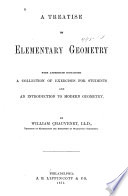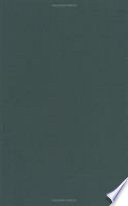 | John Radford Young - Euclid's Elements - 1827 - 228 pages
...BD-DC = AB3 + AC2 ( Prop. XXIX. ). Hence in an isosceles triangle the square of a side is equivalent to the square of any line drawn from the vertex to the base, together with the rectangle of the parts into which it divides the base ; and here again we are... | |
 | William Chauvenet - Geometry - 1871 - 380 pages
...in the points F, G, If, respectively; then AF. AB + AH. AD = AG.AC. 152. In any isSsceles triangle, the square of one of the equal sides is equal to the square of any straight line drawn from the vertex to the base plus the product of the segments of the base. 153.... | |
 | William Chauvenet - Mathematics - 1872 - 382 pages
...AD, in the points F, G, If, respectively; then ARAB + AH.AD = AG.AC. 152. In any isosceles triangle, the square of one of the equal sides is equal to the square of any straight line drawn from the vertex to the base plus the product of the segments of the base. 153.... | |
 | William Chauvenet - Geometry - 1884 - 384 pages
...AD, in the points F, G, H, respectively; then ARAB + AH.AD = AG.AC. 152. In any isosceles triangle, the square of one of the equal sides is equal to the square of iny straight line drawn from the vertex to the base plus the product of the segments of the base. 153.... | |
 | James Gow - Mathematics - 1884 - 350 pages
...proposition that, if in an isosceles triangle a straight line be drawn from the vertex to the base, then the square of one of the equal sides is equal to the square of the straight line so drawn + the rectangle under the segments of the base3. (Simson adds a lemma to... | |
 | George Washington Hull - Geometry - 1897 - 408 pages
...contact is a mean proportional between the diameters of the circles. 601. In any isosceles triangle the square of one of the equal sides is equal to the square of any straight line drawn from the vertex to the base, plus the product of the segments of the base. CONSTRUCTIONS.... | |
 | James Howard Gore - Geometry - 1899 - 266 pages
...of a triangle are inversely proportional to the corresponding bases. 6. In any isosceles triangle, the square of one of the equal sides is equal to the square of any straight line drawn from the vertex to the base plus the product of the segments of the base. 7. The... | |
 | George Albert Wentworth - Geometry - 1899 - 500 pages
...intersect at D, show that ZB 2 - ,AC 2 = lu? - ~C&. Ex. 273. In an isosceles triangle, the square of a leg is equal to the square of any line drawn from the vertex to the base, increased by the product of the segments of the base. Ex. 274. The squares of two chords drawn... | |
 | George Albert Wentworth - Geometry, Modern - 1899 - 272 pages
...the opposite sides intersect at D, show that Ex. 273. In an isosceles triangle, the square of a leg is equal to the square of any line drawn from the vertex to the base, increased by the product of the segments of the base. Ex. 274. The squares of two chords drawn... | |
 | George Albert Wentworth - Geometry - 1904 - 496 pages
...intersect at D, show that 1 - Zc2 = USD* - ~CD2. Ex. 273. In an isosceles triangle, the square of a leg is equal to the square of any line drawn from the vertex to the base, increased by the' product of the segments of the base. Ex. 274. The squares of two chords drawn... | |
| |